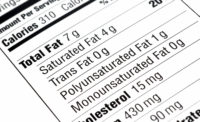U.S. pig farmers are not only well aware of new federal rules for on-farm antibiotic use, but they’re also in compliance. In fact, according to a survey conducted by the National Pork Board, Des Moines, Iowa, in November 2016, 95% of pig farmers surveyed said that they were ready to be fully compliant by the time the rules took effect Jan. 1.
“The pork industry worked toward the Jan. 1 implementation date for nearly two years. There was a concern that some producers would not make changes until after the date of implementation, but that does not seem to be the case,” says Jan Archer, president and a pig farmer. “Pig farmers are committed to the substantive changes regarding antibiotic use, and many discontinued using antibiotics for growth promotion years ago, while also reviewing swine medical treatment uses of antibiotics as well.”
One of the key changes to the new Food and Drug Administration (FDA) rules is that medically important antibiotics could no longer be used for growth promotion. Today, human medically important antibiotics can only be used to treat sick animals or to prevent disease and/or control it.
A key hurdle in complying with new FDA rules is ensuring that every pig farmer has a defined and ongoing client relationship with a veterinarian. That can be a challenge in remote areas of the country where the nearest veterinarian could be hundreds of miles away. That’s why the Pork Checkoff partnered with Global Vetlink, Ames, Iowa, to offer a veterinarian locator tool.
“Complying with the new rules is critical to maintaining consumer trust in the high quality and safety of pork produced in the U.S.,” Archer says. “The two key elements are having an established veterinarian-client-patient relationship and ensuring that antibiotics are administered under the guidance of a veterinarian. To do so without veterinarian oversight is now illegal.”
The survey also showed that for the seventh consecutive year, pork producer support for the Pork Checkoff increased and is now at a record 91% – up 1% from the 2015 survey. Meanwhile, opposition to the Checkoff remains at a record low 4%. These results are the most positive in the history of the survey.
Other highlights included:
- Right direction/wrong track. 76% of producers – a full three out of four – said that the industry is heading “in the right direction,” improving from the previous year’s score of 70%. Of those surveyed, 19% feel the industry is “on the wrong track.” This improvement in optimism is encouraging despite the market supply pressure many are feeling with lower prices for pigs.
- The biggest challenge facing producers is “too many rules/regulations.” In previous years, the main challenge was viewed as “managing hog health and disease.” That previously No. 1 concern fell to No. 4 this year, a significant drop.
- Single most important request. Producers’ No. 1 request of the Checkoff is to educate consumers on pork production and the industry. This was followed closely by advertising and promoting pork and opening new markets.
“America’s pig farmers understand that growing domestic and export demand for pork is critical, but it all starts with building trust,” Archer says. “This survey bears out that it begins with educating consumers about how pigs are raised, pork’s safety and its nutritional value.”
In response to specific questions about the National Pork Board’s strategic plan implemented early in 2015, the awareness and importance of each goal remains strong. On a 10-point scale:
- Build consumer trust rated a mean score of 8.91 (a decrease from 9.04 in 2015).
- Grow consumer demand rated a mean score of 8.70 (an increase from 8.63 in 2015).
- Drive sustainable production rated a mean score of 8.18 (an increase from 7.96 in 2015).
“Clearly, the implementation of the strategic plan is aligned with the concerns, interests and thoughts of producers,” Archer says. “Pig farmers tell us that their investment in the Pork Checkoff is at work, with 17 defined objectives directly supporting each of the three goals.”
This most recent national survey is based on phone interviews with 550 producers nationwide.



